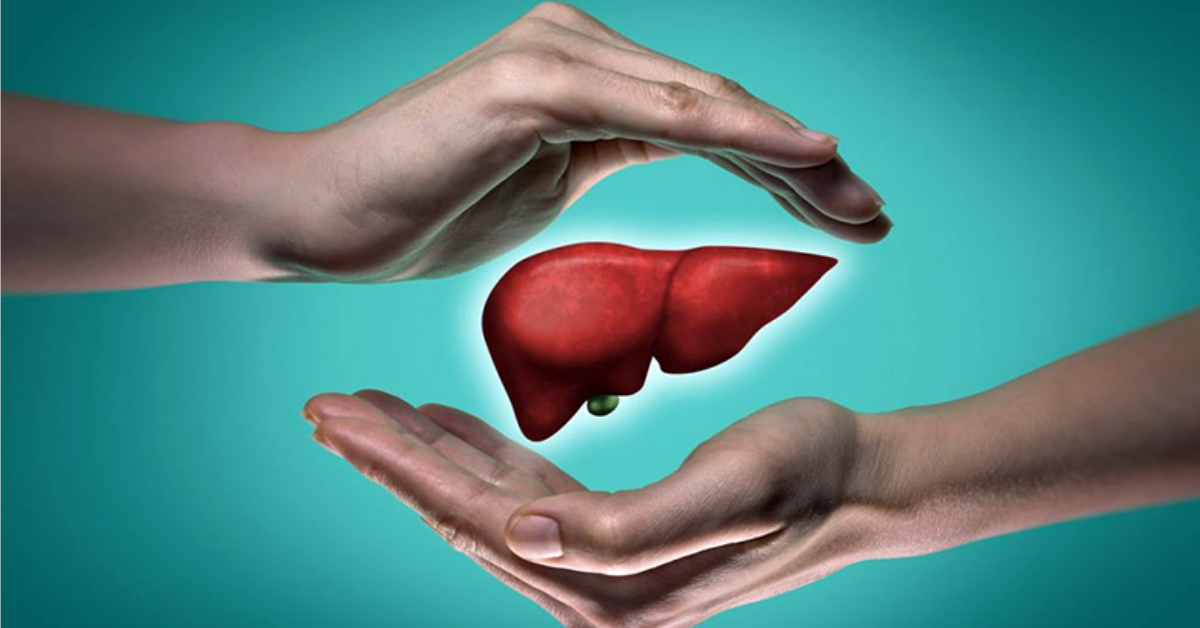Liver Cirrhosis Stem Cell Treatment India: A New Hope for Liver Regeneration
Liver Cirrhosis Stem Cell Treatment India is a chronic and progressive condition characterized by the irreversible scarring (fibrosis) of liver tissue. It is commonly caused by long-term liver damage due to factors such as chronic hepatitis B or C, excessive alcohol intake, non-alcoholic fatty liver disease (NAFLD), and autoimmune disorders. Over time, cirrhosis impairs liver function, leading to complications such as portal hypertension, liver failure, and even liver cancer.
Traditional treatment approaches for liver cirrhosis include lifestyle modifications, antiviral therapies, and medications to manage symptoms. In advanced stages, liver transplantation is often the only option. However, due to the shortage of donors, high costs, and potential complications, many patients seek alternative treatments—this is where stem cell therapy in India offers a promising solution.
What Is Stem Cell Therapy?
Stem cell therapy uses the body’s natural regenerative cells—stem cells—to repair, replace, or regenerate damaged tissues and organs. These cells have the unique ability to differentiate into various specialized cell types and support tissue healing by secreting growth factors, reducing inflammation, and promoting new cell formation.
For liver cirrhosis, stem cell therapy is aimed at regenerating healthy liver tissue, slowing disease progression, and improving liver function—all without the need for organ transplantation.
Why Choose Stem Cell Therapy for Liver Cirrhosis?
Stem cell therapy is gaining traction as a minimally invasive and safe approach to managing chronic liver disease. Here are some of the key benefits:
-
Liver Regeneration: Stem cells help regenerate hepatocytes (liver cells) and promote tissue repair.
-
Anti-Inflammatory Effect: They reduce liver inflammation and fibrosis, slowing disease progression.
-
Improved Liver Function: Many patients report better enzyme profiles, reduced ascites, and improved overall health.
-
Reduced Need for Transplant: For some patients, stem cell therapy may delay or even eliminate the need for liver transplantation.
-
Minimal Side Effects: Compared to surgery or long-term drug use, stem cell therapy has fewer side effects and quicker recovery time.
Stem Cell Treatment for Liver Cirrhosis in India
India is emerging as a global hub for advanced stem cell treatments, including for liver cirrhosis. The country offers a unique combination of affordable medical care, world-class infrastructure, and renowned stem cell specialists.
Leading Edge Facilities
Indian regenerative medicine centers use GMP-certified labs, ISO-compliant protocols, and ICMR-approved guidelines to ensure the highest quality of care. Hospitals are equipped with modern imaging, diagnostics, and cell-processing units to support successful outcomes.
Experienced Medical Professionals
India is home to a wide network of qualified hepatologists, stem cell biologists, and transplant experts who collaborate on each case. Many physicians are internationally trained and follow evidence-based practices.
Cost-Effective Treatment
The cost of liver cirrhosis stem cell therapy in India is significantly lower than in countries like the US, UK, or Germany. This makes it an ideal destination for both local and international patients looking for effective and economical treatment options.
How Stem Cell Therapy Works for Liver Cirrhosis
Step 1: Medical Evaluation
The process begins with a thorough assessment that includes liver function tests, imaging (ultrasound, MRI, or FibroScan), medical history, and lifestyle analysis. The severity of cirrhosis (typically scored by Child-Pugh or MELD score) helps determine eligibility for stem cell therapy.
Step 2: Stem Cell Harvesting
Stem cells are obtained either from the patient’s own body (autologous) or from donor sources (allogeneic). Common sources include:
-
Bone Marrow: Rich in hematopoietic and mesenchymal stem cells.
-
Adipose Tissue: Contains mesenchymal stem cells (MSCs) with anti-inflammatory effects.
-
Umbilical Cord: A potent allogeneic source, especially for off-the-shelf treatments.
Step 3: Cell Processing
The harvested stem cells are processed in cleanroom labs under sterile conditions. The cells are purified, expanded, and tested for quality, viability, and safety before transplantation.
Step 4: Stem Cell Administration
Stem cells are introduced into the body via:
-
Intravenous Infusion (IV) – Distributes cells systemically.
-
Intrahepatic Injection – Delivers cells directly into the liver.
-
Hepatic Artery Infusion – Enhances targeted delivery through liver’s blood supply.
Step 5: Monitoring and Follow-Up
Patients are monitored for any side effects and liver function improvement through periodic tests and clinical assessments over several months. A multidisciplinary care team supports the recovery journey.
Expected Outcomes of Liver Cirrhosis Stem Cell Therapy
Many patients experience the following benefits post-treatment:
-
Improved liver enzyme levels (ALT, AST, bilirubin)
-
Reduction in fibrosis and fatty infiltration
-
Less frequent episodes of hepatic encephalopathy or ascites
-
Enhanced energy levels and overall well-being
-
Slower disease progression
While stem cell therapy cannot fully reverse advanced cirrhosis, it can stabilize liver function, improve quality of life, and delay the need for transplantation in many cases.
Who Can Benefit from This Therapy?
Stem cell therapy is best suited for:
-
Patients with early to moderate cirrhosis (Child-Pugh A or B)
-
Individuals not eligible or waiting for liver transplantation
-
Patients with autoimmune, viral, or alcoholic liver disease
-
Individuals with decompensated liver disease looking for supportive care
Patients in end-stage cirrhosis may not see significant benefits unless stem cell therapy is part of a comprehensive treatment plan, possibly including transplant preparation.
Safety and Regulations
Stem cell treatment for liver cirrhosis in India is governed by the Indian Council of Medical Research (ICMR) and CDSCO (Central Drugs Standard Control Organization). Reputable clinics ensure:
-
Ethical sourcing of cells
-
Full informed consent
-
Clinical-grade processing and quality control
-
Transparency about outcomes and risks
India is also conducting several ongoing clinical trials and research initiatives on the use of MSCs for liver regeneration, with promising early results.
Cost of Liver Cirrhosis Stem Cell Treatment in India
Costs can vary depending on the:
-
Type and source of stem cells (autologous vs. allogeneic)
-
Number of cell infusions needed
-
Hospital or clinic’s location and reputation
-
Additional care such as imaging, rehabilitation, or detoxification
Estimated cost range: ₹2,00,000 to ₹6,00,000 (approx. $2,500 to $8,000 USD)
Compared to liver transplantation, which can cost over ₹25,00,000, stem cell therapy offers a more accessible and less invasive alternative.
What to Expect During Recovery
Post-treatment care includes:
-
Regular monitoring of liver function
-
Healthy diet and lifestyle changes (no alcohol, low-fat diet)
-
Use of liver-supportive medications if needed
-
Physical and emotional wellness support
Patients are usually discharged within 1–2 days and can resume normal activities within a week, with gradual improvement seen over 2–6 months.
Choosing the Right Clinic in India
Patients considering liver cirrhosis stem cell treatment should look for:
-
Clinics with ICMR/CDSCO-compliant protocols
-
Cleanroom labs for cell processing
-
A multidisciplinary liver care team
-
Transparent communication about success rates and risks
-
Experience in treating international patients
Medical tourism support services such as visa assistance, translators, and accommodation can also enhance the treatment experience.
Future of Liver Regeneration in India
The future of liver cirrhosis treatment is moving towards cellular therapies, tissue engineering, and gene editing. India is investing in biobanking, clinical trials, and collaborations with global research institutions to stay at the cutting edge of regenerative medicine.
Stem cell therapy will continue to evolve, offering personalized and targeted therapies that can transform how chronic liver diseases are managed.
Conclusion
Liver cirrhosis can be a life-limiting disease, but stem cell therapy offers a ray of hope for regeneration, symptom relief, and improved quality of life. India, with its combination of medical excellence, affordability, and patient-centered care, stands at the forefront of this healthcare revolution.







